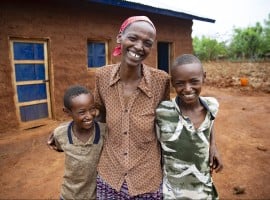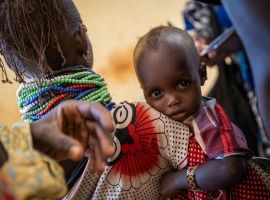
Read our 2024 annual report

Knowledge Hub
Here’s what you need to know about the global refugee crisis in advance of World Refugee Day, 2025.
In 2019, the United Nations High Commissioner for Refugees reported that the number of people in the world fleeing violence was the highest it had been since World War II. The figure was 70.8 million, including 25.9 million refugees.
It was a record, until it was broken the next year. And the next. And the next…
We are now at a total of 123.2 million people displaced around the world, 31 million of whom are refugees. Compared to just six years ago, this represents an increase of over 20% — and overall global displacement has nearly doubled in the last decade. While many have returned home and these numbers can fluctuate heavily throughout the year, at one point in 2023 we exceeded 40 million refugees around the world.
How did it get to be so bad? What does this mean for the tens of millions of people who were forced to leave home? Here’s what you need to know about the global refugee crisis in 2025.
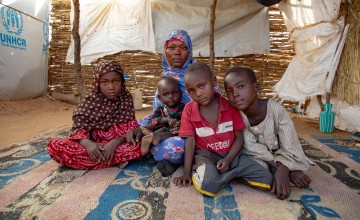
When did the refugee crisis start?
There isn’t a clear moment we can pinpoint as the “start” of the crisis. The UNHCR was founded in 1950 and began keeping records on refugee populations in 1951, which also means we have a limited range of data. Every year since the start of the UNHCR’s data has seen at least 1.6 million registered refugees around the world, but obviously there were also larger populations before then when you look at the history of the 20th Century (estimates place the total number of people displaced by World War II at around 50 million).
Refugee populations began to grow in the 1960s and 1970s, owing to major, protracted conflicts in Afghanistan, Bangladesh, and Vietnam and a number of smaller, localised conflicts. That increased through the 1980s and 1990s with large displacements coming out of Iraq, Rwanda, and Yugoslavia. Since 1982, UNHCR has consistently had at least 10 million refugees under its protection.
All of this to say: The current crisis didn’t happen overnight.
Displacement has nearly doubled during the last decade, including over 31 million refugees.
Okay, so when did it get so bad?
This is a bit easier to pinpoint. Between 2008 and 2012, the global refugee population sat at around 10.5 million people. In 2013, that number went up to nearly 11.7 million, and in 2014 it grew again to 14.3 million.
The crisis in Syria was a key tipping point. In 2012, one year into the conflict, there were 729,000 Syrian refugees registered with UNHCR. The following year, there were nearly 2.5 million — an increase of nearly 250%. That number grew to as many as 6.8 million Syrian refugees in 2021, and Syria remains one of the world’s largest refugee crises (it was the largest, period, until the onset of conflict in Sudan).
In 2016, conflict in South Sudan and the Democratic Republic of Congo also led to more refugees seeking shelter in neighbouring countries. The following year, the Rohingya crisis led to another massive displacement. In the last two years, renewed crises in Afghanistan, Sudan, and Ukraine have also tipped the scale.
As conflicts become more and more protracted, not only do refugees not return home as quickly as they have in previous generations, but we also see more waves of displacement as situations deteriorate.
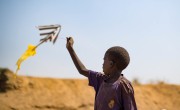
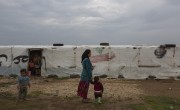





What else is causing the refugee crisis?
Conflict is a key driver of displacement and one of the key reasons many people become refugees. Refugee status has to be earned by proving one’s life is under credible threat if they return to their home country, so this is one of the most common ways of proving that. Of the 10 largest refugee crises in the world today, all 10 countries of origin are facing some form of conflict or violence.
However, this isn’t the only reason that so many people have uprooted their lives and left home. While these three causes of displacement won’t automatically guarantee refugee status, they’re three key considerations and factors in the current situation:
1. Violation of human rights or persecution
This is where terminology can get a bit technical; while conflict is almost always a form of violence, not all forms of violence are, by definition, conflict. Take, for instance, the Rohingya crisis. The Rohingya are a stateless ethnic minority and have faced decades of persecution. The most recent surge, beginning in Rakhine State in 2017, led to one of the largest refugee situations today.
2. Hunger and famine
Conflict and climate are two of the biggest contributors to mass migration, though famine and famine-like conditions is another key factor. Hunger and migration go hand-in-hand, as hunger is both a danger that threatens the lives of people forced to leave their homes, and a key influence on their decisions about when and where to move.
3. Climate change
The effects of natural disasters and environmental risks touch on a number of related factors, including conflict and hunger. The number of climate refugees has been on the rise in recent years due to climate disasters growing in terms of destruction and frequency, and the UN estimates that 20 million people are displaced within their own countries each year due to similar conditions.
A quick note here on semantics: The UN doesn’t grant refugee status to people escaping climate-related issues if there are no other factors leading to their displacement, so “climate refugee” is not an official or accurate title. However, this is an undeniable issue, one that leads to forced migration and one that often goes hand-in-hand with conflict.
Why is the refugee crisis a problem?
For starters, it’s not because of the refugees themselves. In most cases they aren’t able to legally work in the countries where they are temporarily living — they often can’t even get formal housing. And more violence is directed towards refugees than led by refugees.
Indeed, refugees are more likely to face threats than members of their host communities, especially women and children, who are targets for gender-based violence, exploitation, and assault. With limited options for food and basic needs, they also face enormous barriers to accessing even the most basic essentials.
The real problem with the current crisis is capacity: Providing the bare necessities to nearly 40 million people and ensuring protection of their rights is — to say the least — a challenge. An added complication here is that most refugees are hosted in neighboring countries, countries also prone to conflict, violence, and insecurity. This makes getting supplies and support to displacement communities that much more difficult.
Temporary displacement is one thing, but the protracted nature of most conflicts now means that host communities with limited resources can be left with refugee communities for years, if not decades.
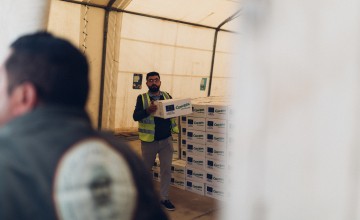
What rights do refugees have?
The United Nations Universal Declaration of Human Rights guarantees the equal rights of all human beings. This includes the right to seek asylum from persecution in other countries. In 1951, the UN also published the Convention Relating to the Status of Refugees. In 1998, it published the Guiding Principles on Internal Displacement. Both of these are intended to protect the rights of displaced people. Yet the rights of displaced people are violated on a daily basis.
Upholding the rights of refugees (and internally displaced people) is one of the biggest priorities for organisations responding to the crisis. Many refugees just want to go home, but this is often not possible due to the dangers faced at home. In the meantime, there are also some basic aspects of life that need to be considered while a refugee is living in displacement, including:
- Food
- Water
- Shelter or housing
- Healthcare, including maternal health and mental health
- Education
- Employment and financial support
- Safety and protection





How do we solve the refugee crisis?
Ultimately, it’s about ending conflict, violence, and persecution. But in the meantime, there are some other solutions that the UN currently recognises:
1. Returning home
This happens when circumstances enable refugees to return to their homes voluntarily and safely. Many refugees want to rebuild their lives in their homes, although this is entirely dependent upon whether or not it is safe for them to do so.
2. Local integration
Local integration happens when refugees are invited to remain permanently where they initially settled after fleeing their homes. This option provides continuity and stability, enabling displaced communities to begin working and resume their daily activities.
3. Resettlement
Resettlement or relocation is a process that allows refugees to voluntarily settle in a new, third country. It enables people to begin a new chapter of their lives. Since most conflicts today last for extended and indeterminate periods of time, more efforts and resources are focusing on increasing opportunities for this as an option.

Concern’s work with refugees
Emergency response is part of Concern’s DNA and working with refugee communities in this context has become a core skill for our teams over nearly 60 years.
We work with both refugees and host countries to ease the pressure that mass displacement can put on both groups. In addition to meeting the frontline needs — including food, shelter, protection, and other non-food essentials — we also work with refugees on longer-term initiatives, including skill-building and livelihood development and psychosocial support.
We also put a special focus on the needs of child refugees (who make up 40% of the global refugee population), including education, family support, and providing safe spaces where they can play and enjoy their childhood.
In 2023, we responded to 66 emergencies in 20 countries, reaching nearly 15.5 million people. This included:
- Playing an essential role in NGO coordination in Chad and collaborating with a consortium of NGOs on the cross-border response to support Sudanese refugees.
- Rehabilitating temporary shelters in Lebanon, including preparing them for harsh winter conditions, in communities hosting a total of 39,700 Syrian refugees.
- Working with nearly 84,000 Rohingya refugees in Cox’s Bazar, Bangladesh on ways of preventing malnutrition within their families.
